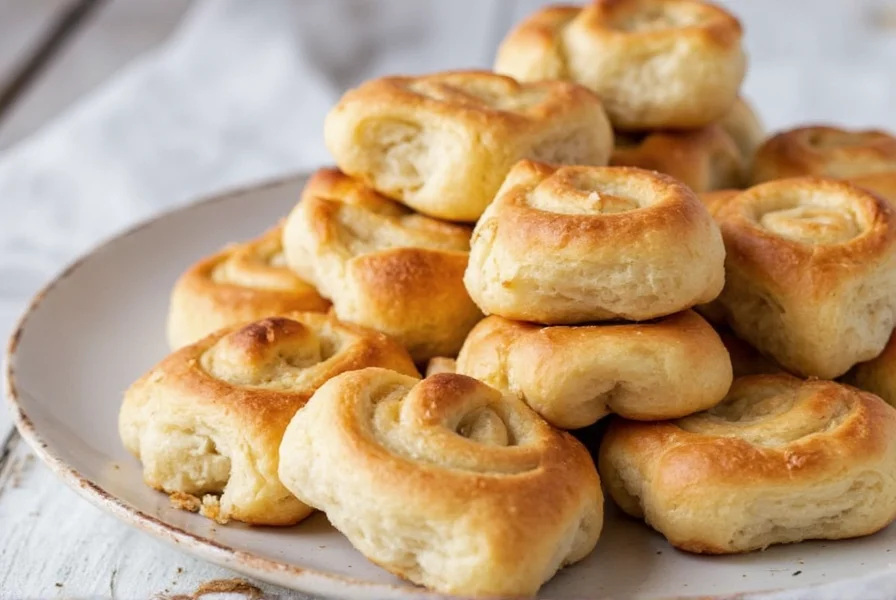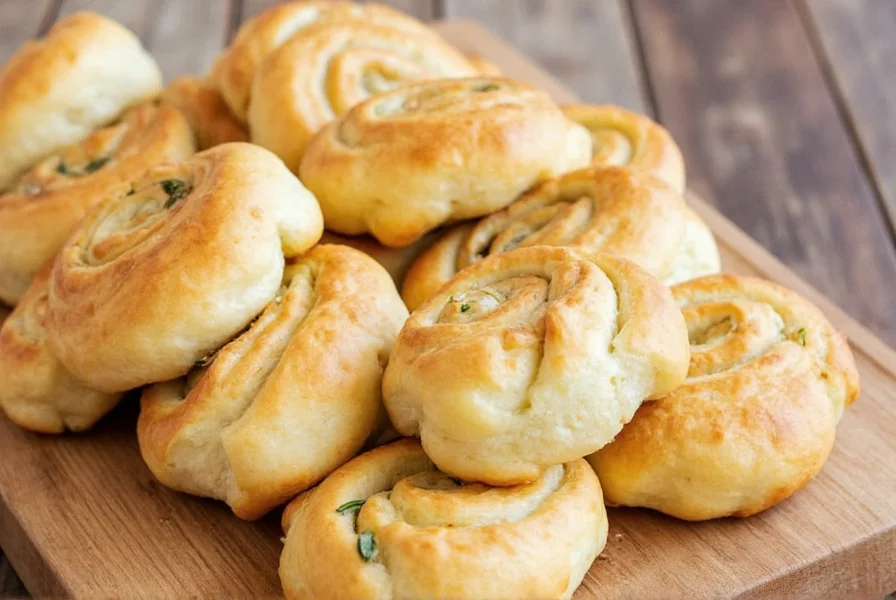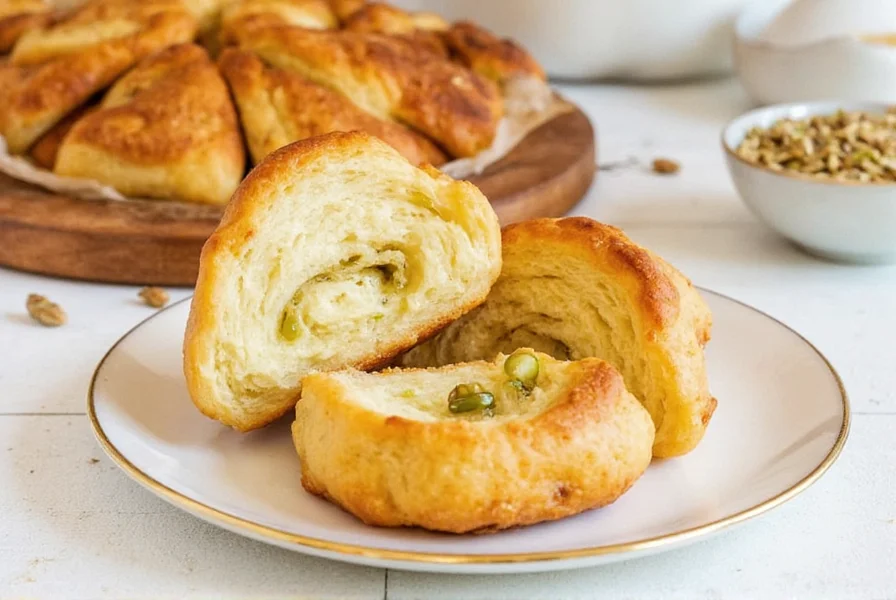These beloved Scandinavian pastries have gained international popularity for their unique flavor profile that elevates them beyond standard cinnamon rolls. The magic happens when freshly ground cardamom seeds blend with butter, sugar, and a touch of orange zest to create a filling that transforms simple yeast dough into an aromatic delight. Unlike their cinnamon counterparts, cardamom rolls offer a more complex flavor experience with floral, citrusy notes that complement the sweet dough perfectly.
The Essential Role of Cardamom in Scandinavian Baking
Cardamom isn't just an ingredient in these rolls—it's the star. This ancient spice, native to India but embraced by Nordic cultures since the Middle Ages, brings a distinctive flavor profile that defines authentic Scandinavian baking. The quality of your cardamom dramatically impacts the final product. For best results, use freshly ground green cardamom pods rather than pre-ground powder, as the volatile oils that give cardamom its characteristic aroma dissipate quickly.
When selecting cardamom, look for plump, green pods that feel heavy for their size. Crush a single seed between your fingers to test freshness—it should release a strong, citrusy aroma with hints of eucalyptus. This attention to spice quality separates exceptional homemade cardamom rolls from merely good ones.
Traditional Cardamom Roll Ingredients Explained
The beauty of cardamom rolls lies in their relatively simple ingredient list, where each component plays a crucial role. Understanding why each ingredient matters helps you become a better baker rather than just following instructions mechanically.
| Ingredient | Function | Professional Tip |
|---|---|---|
| Active dry yeast | Rises the dough through fermentation | Proof in lukewarm milk with pinch of sugar before adding to flour |
| Unsalted butter | Adds richness and creates flaky layers | Use European-style butter (82% fat) for superior texture |
| Green cardamom | Provides signature flavor and aroma | Grind seeds fresh using coffee grinder dedicated to spices |
| Bread flour | Creates ideal gluten structure | Substitute with all-purpose flour plus 2 tbsp vital wheat gluten |
Step-by-Step Cardamom Roll Preparation
Creating perfect cardamom rolls requires attention to detail at each stage. While the process takes time, the results justify the effort. The key stages include:
Dough Preparation
Begin by activating your yeast in warm milk (105-110°F) with a teaspoon of sugar. While this proofs, combine your dry ingredients: 4 cups bread flour, 1/4 cup granulated sugar, and 1 teaspoon salt. Once the yeast mixture becomes frothy (about 5-7 minutes), incorporate it with 1/2 cup softened unsalted butter into the dry ingredients.
Knead the dough for 8-10 minutes until smooth and elastic. Properly developed gluten is essential for rolls that rise well without collapsing. Place the dough in a lightly oiled bowl, cover with plastic wrap, and let rise in a warm spot until doubled—approximately 1.5 hours.
Filling Creation
The filling makes cardamom rolls special. Combine 1 cup softened butter with 1 cup brown sugar, 3 tablespoons freshly ground cardamom, 1 tablespoon orange zest, and a pinch of salt. The orange zest isn't traditional but enhances cardamom's citrus notes beautifully. Beat until smooth and spreadable.
Roll Assembly
After the dough rises, punch it down and roll it into a 16x24 inch rectangle on a lightly floured surface. Spread the filling evenly, leaving a 1/2 inch border. Roll tightly from the long side, pinching the seam to seal. Using dental floss or a sharp knife, cut into 1.5 inch slices.
Professional Baking Tips for Perfect Cardamom Rolls
Achieving bakery-quality cardamom rolls at home requires understanding several key techniques:
- Temperature control: Maintain consistent room temperature (70-75°F) during rising. Too cold slows fermentation; too warm kills yeast.
- Dough thickness: Roll your dough to uniform 1/4 inch thickness for even baking and consistent roll size.
- Cutting technique: Use unflavored dental floss pulled through the roll for clean cuts without squishing the dough.
- Baking temperature: Start at 375°F for 15-18 minutes until golden brown—higher than cinnamon rolls to set the structure quickly.
Many home bakers struggle with rolls that spread too much or lack definition. This typically happens when the filling is too soft or the dough hasn't chilled sufficiently before baking. After cutting, refrigerate the rolls for 20-30 minutes before baking—this firms the butter, preventing excessive spreading.
Cardamom Rolls vs Cinnamon Rolls: Understanding the Differences
While visually similar, cardamom rolls and cinnamon rolls differ significantly in flavor profile and baking chemistry:
- Spice characteristics: Cardamom offers complex floral, citrus, and slightly medicinal notes, while cinnamon provides straightforward warmth and sweetness.
- Flavor intensity: Cardamom requires precise measurement—too little lacks impact, while too much becomes overpowering. Cinnamon is more forgiving in quantity.
- Dough hydration: Cardamom rolls typically use slightly drier dough to accommodate the wetter filling.
- Cultural context: Cardamom rolls represent Scandinavian baking traditions, while cinnamon rolls have Germanic origins.
Variations and Substitutions
Traditional cardamom rolls offer flexibility for different dietary needs and flavor preferences:
- Gluten-free version: Substitute with 400g gluten-free flour blend plus 2 teaspoons xanthan gum
- Dairy-free option: Replace butter with refined coconut oil and use almond milk
- Reduced sugar: Decrease filling sugar by 25% and add 1 tablespoon apple sauce to maintain moisture
- Nut variation: Add 1/2 cup finely chopped almonds to the filling for Scandinavian-inspired "kardemummabullar med mandel"
Serving and Storage Recommendations
Cardamom rolls taste best when fresh from the oven, but proper storage maintains quality:
- Immediate serving: Enjoy warm with a light dusting of powdered sugar or simple glaze (1 cup powdered sugar + 2 tbsp milk)
- Short-term storage: Keep in airtight container at room temperature for up to 2 days
- Long-term storage: Freeze unbaked rolls on a parchment-lined baking sheet, then transfer to freezer bags for up to 3 months
- Reheating: Thaw frozen rolls overnight in refrigerator, then bake at 325°F for 15-20 minutes until heated through

Troubleshooting Common Cardamom Roll Problems
Even experienced bakers encounter issues with cardamom rolls. Here's how to solve frequent problems:
- Dense rolls: Usually caused by too much flour or dead yeast. Measure flour by weight (500g) rather than cups, and always proof yeast first.
- Filling leakage: Results from overfilling or insufficiently chilled rolls before baking. Use 1 cup filling for standard recipe and refrigerate cut rolls 20 minutes before baking.
- Pale color: Indicates underbaking or insufficient egg wash. Brush with beaten egg before baking and ensure oven is properly preheated.
- Strong medicinal taste: Too much cardamom or using old, stale spice. Use no more than 3 tablespoons freshly ground cardamom for standard recipe.

Historical Context of Cardamom in Scandinavian Baking
Cardamom's journey to Scandinavian kitchens is fascinating. Though native to India, this spice reached Nordic countries through ancient trade routes. By the 16th century, cardamom had become a staple in Swedish and Norwegian baking, despite its high cost. The spice's ability to mask the taste of rancid butter (common before refrigeration) contributed to its popularity.
Traditional Swedish "kardemummabullar" and Norwegian "kardemommebolle" have slightly different preparations—Swedish versions often include more cardamom with a touch of saffron, while Norwegian variations sometimes incorporate pearl sugar. Understanding these regional differences helps bakers appreciate the cultural significance behind each bite.
Frequently Asked Questions
Can I use ground cardamom instead of grinding my own pods?
Yes, but freshly ground cardamom provides significantly better flavor. Pre-ground cardamom loses its volatile oils quickly, resulting in muted flavor. If using pre-ground, increase the amount by 25% and check freshness by smelling—the spice should have a strong, citrusy aroma.
Why do my cardamom rolls spread too much during baking?
Excessive spreading usually occurs when the filling is too soft or the shaped rolls haven't been properly chilled before baking. After cutting your rolls, refrigerate them for 20-30 minutes to firm the butter in the filling. This prevents the rolls from spreading too much while still allowing proper rise.
How can I tell when cardamom rolls are perfectly baked?
Cardamom rolls are done when they reach an internal temperature of 190°F and the edges are golden brown. Unlike cinnamon rolls which can be slightly underbaked, cardamom rolls need full baking to set their structure due to the wetter filling. The tops should spring back when lightly touched.
Can I prepare cardamom rolls the night before?
Yes, you can prepare cardamom rolls through the shaping stage, then cover and refrigerate overnight. The cold fermentation actually enhances flavor development. When ready to bake, remove from refrigerator 30 minutes before baking to take the chill off, then bake as directed—adding 3-5 minutes to the baking time.











 浙公网安备
33010002000092号
浙公网安备
33010002000092号 浙B2-20120091-4
浙B2-20120091-4